#Dakota Access Pipeline
Text
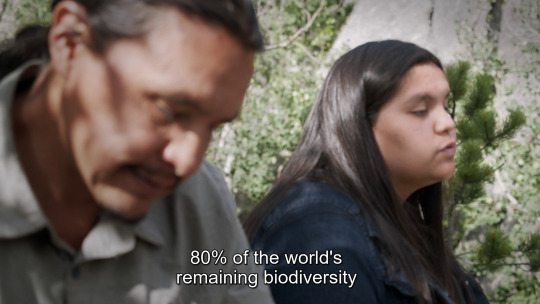


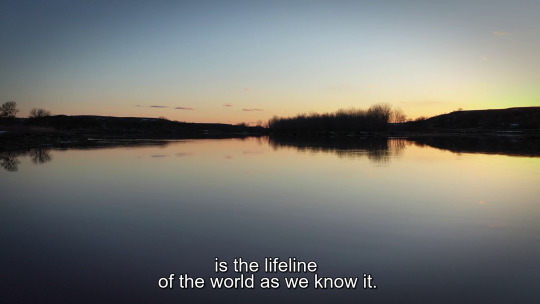
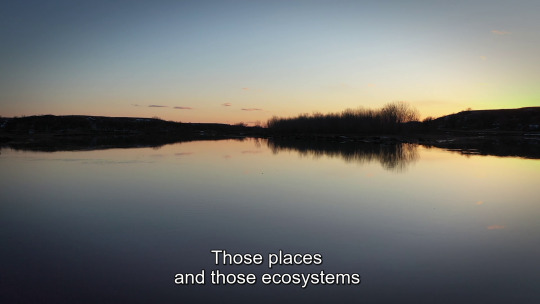
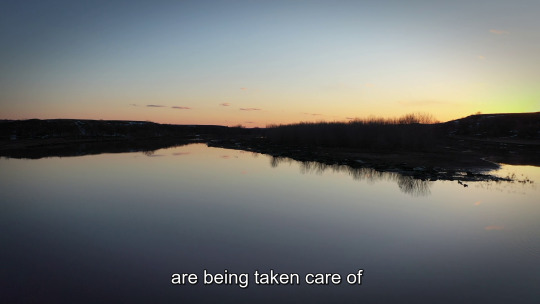








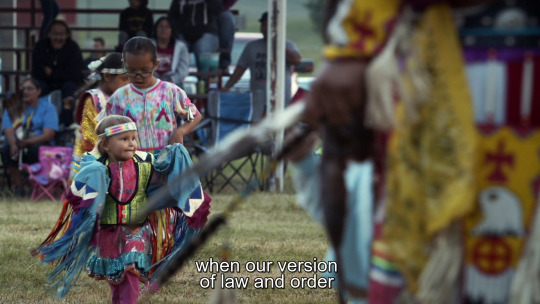

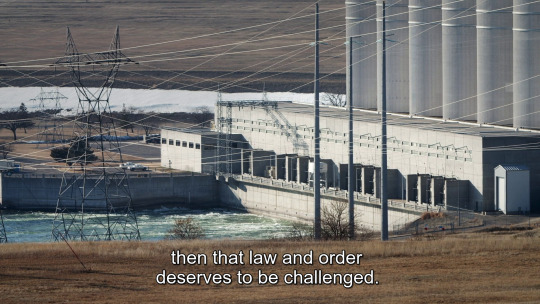
Chase Iron Eyes & Tokata Iron Eyes in Oyate (2022)
#native american#oglala lakota#dapl#indigineous people#indigenous#tokata iron eyes#chase iron eyes#biodiversity#dakota access pipeline
29K notes
·
View notes
Text
Up to 10 informants managed by the FBI were embedded in anti-pipeline resistance camps near the Standing Rock Sioux Indian Reservation at the height of mass protests against the Dakota Access pipeline in 2016. The new details about federal law enforcement surveillance of an Indigenous environmental movement were released as part of a legal fight between North Dakota and the federal government over who should pay for policing the pipeline fight. Until now, the existence of only one other federal informant in the camps had been confirmed.
The FBI also regularly sent agents wearing civilian clothing into the camps, one former agent told Grist in an interview. Meanwhile, the Bureau of Indian Affairs, or BIA, operated undercover narcotics officers out of the reservation’s Prairie Knights Casino, where many pipeline opponents rented rooms, according to one of the depositions.
The operations were part of a wider surveillance strategy that included drones, social media monitoring, and radio eavesdropping by an array of state, local, and federal agencies, according to attorneys’ interviews with law enforcement.
573 notes
·
View notes
Text
By JON QUEALLY
Common Dreams
Sep 09, 2023
"The Corps' covering for the pipeline company's outrageous safety record and the reviewer's serious conflict of interest have now resulted in a failed effort," said Standing Rock Sioux Tribe Chairwoman Janet Alkire. "They need to start over with adult supervision."
Standing Rock Sioux Tribe Chairwoman Janet Alkire is leading a fresh demand that the U.S. Army Corps of Engineers throw out an ongoing environmental review process of the controversial Dakota Access Pipeline and start again from scratch alongside a superseding call for the pipeline to be shuttered completely.
Following Friday's release of a revised Environmental Impact Statement (EIS), ordered by a federal court, the tribe said the document reveals the entire process has been a failure and that the pipeline—currently operating across their land without consent in what they consider an "illegal" manner by the Energy Transfer company—should be shut down once and for all.
"We're furious that the Army Corps has addressed none of our major concerns during the review process," Chairwoman Alkire said in a statement.
"The pipeline is an imminent threat to the Missouri River, sensitive habitat, and sacred burial sites along the riverbank," she continued. "The oil company's emergency response plans are inadequate, its safety track record is horrendous, and there's been a stunning lack of transparency with Standing Rock throughout the environmental review process, including inaccurate characterizations of tribal consultation."
The Army Corps did not make any recommendations or indicate preferences among the alternatives presented in the new EIS report, which included keeping it in operation, possible rerouting, removing the pipeline by excavation, or abandoning it in place. The Corps said its final recommendations will accompany a final report once the review process is complete, but the Standing Rock Sioux said the process has been seriously flawed.
The tribe said the draft EIS fails to "account for the existence of criminal charges and a host of fines and serious citations" from regulators faced by Energy Transfer. Alkire accused the Corps of "doing all it can to ignore the company’s poor safety record and the high risk" of the pipeline. According to the statement by the tribe:
the entirety of the environmental review process hasn't been taken seriously and is compromised because the Corps selected a company with a clear conflict of interest to prepare the just-released draft EIS. Environmental Resources Management — which also produced a sparkling environmental review for the Keystone XL pipeline, later shelved due to environmental concerns — is a member of the American Petroleum Institute. That organization previously filed a legal brief in support of DAPL in Standing Rock’s suit against the Army Corps.
Moreover, Environmental Resources Management has contracted with at least five separate companies with an ownership interest in DAPL.
The release of the EIS triggers a 45-day public comment period and the Standing Rock Sioux Tribe is now requesting public support in opposition of the project.
"The Corps' covering for the pipeline company's outrageous safety record and the reviewer's serious conflict of interest have now resulted in a failed effort," said Alkire of the current process. "They need to start over with adult supervision."
Amy Mall, senior advocate at NRDC, said her group stands "in solidarity with the Standing Rock Sioux Tribe in opposing this dirty and dangerous pipeline that harms the climate and threatens the primary water source for the Tribe."
"The Army Corps must consider all of the risks of this pipeline, make all significant environmental information available without redactions, and honor the Tribe’s treaty rights," Mall added. "We call on the Corps to shut it down."
Our work is licensed under Creative Commons (CC BY-NC-ND 3.0). Feel free to republish and share widely.
JON QUEALLY
Jon Queally is managing editor of Common Dreams.
Full Bio >
#standing rock sioux tribe#dakota access pipeline#u.s. army corps of engineers#fossil fuels#climate crisis#climate change#NRDC
116 notes
·
View notes
Text
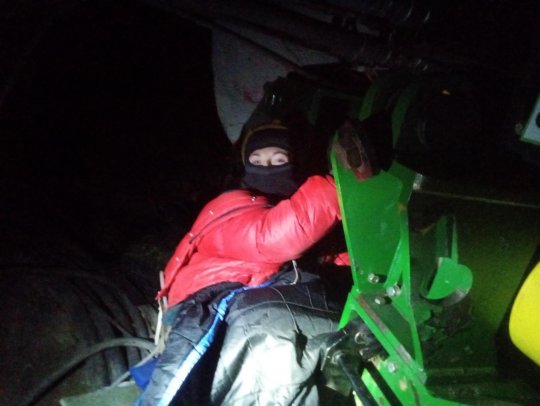

March 11, 2024 — Appalachians Against Pipelines activists prevented drilling of Poor Mountain in Virginia for 8 hours as part of an effort to stop the Mountain Valley pipeline (MVP) project.
__
Mountain Valley Pipeline is a fracked gas pipeline that "stretches from the shale fields of so-called 'West Virginia' into central 'Virginia' with a possible extension into 'North Carolina.' The hazardous project will disrupt delicate ecosystems, harm communities, and increase international dependence on fossil fuels, pushing the planet further into climate chaos."
Activists face arrests and jail time trying prevent completion of MVP and the inevitable environmental disasters caused by pipelines like Keystone, which has had 23 spills since it began operating in 2010.

2013 Keystone pipeline spill in Arkansas
➡️ Support the Appalachian Legal Defense Fund
#Appalachians Against Pipeline#StopMVP#Mountain Valley Pipeline#pipeline#climate change#environment#climate crisis#climate action#Virginia#West Virginia#WVA#donate#Keystone Pipeline#Dakota Access Pipeline#NoDAPL#Land Back#Free Palestine#NDN#Black tumblr#fracking
9 notes
·
View notes
Text
The energy company behind Dakota Pipeline is still trying to get documents from @UnicornRiot and reporter Niko Georgiades about their coverage of protests against the pipeline project.
The subpoenas were quashed, but now it’s appealing the decision.
#dakota pipeline#dakota#dakota access pipeline#oil#gas#fossil fuels#activism#political activist#class war#jerkbillionaires#jerktrillionaires#jerkmillionaires#eat the rich#eat the fucking rich#ausgov#politas#auspol#tasgov#taspol#australia#fuck neoliberals#neoliberal capitalism#anthony albanese#albanese government#fuck the gop#fuck the police#fuck the patriarchy#fuck the supreme court#fuck the tories#united states
13 notes
·
View notes
Text
Hellooo everyone in the US im linking a petition to stop the dakota access pipeline here . please take a few minutes to sign it and share it! the comment period ends on the 13th of December [in two days as of me writing this!!] and is very nearly to their comment goal. it does look like you need a US address to do so so if you arent in the US please just share it [: thank youu
#i tried to post the link in the body of the text so ppl could see it and yknow be less sus of it but its long as fuck#if youre on desktop i think you can hover over the hyperlink and it should show u the link?#if ud rather not click random links for internet safety you can look up the stop the dakota access pipe line petition by climate hawks vote#thats the one i link imsure theres others#climate change#Dakota access pipeline#petitions
3 notes
·
View notes
Text


I don’t know if anyone will see this but it’s important and super easy! They have less than 800 letters left to go and theres a template right there on the site!
#dakota access pipeline#standing rock#water rights#indigenous rights#environmentalism#environmental activism#climate change#petition#petitions#lots of tags bc i dont rlly have any following idk#DAPL
2 notes
·
View notes
Text
[Crossposted from Instagram]
instagram
The Dakota Access Pipeline (or DAPL) is a federally commissioned pipeline carrying ~19 million gallons of petroleum oil per day.
DAPL receives the crude oil through the Bakken Oil Field, a major site for hydraulic fracturing—fracking.
The pipeline runs along the Missouri River's watershed, which provides drinking water for millions of people, including members of the Standing Rock Reservation.
Against the fierce protests of Indigenous people, former president Donald Trump signed an executive order that endorsed its construction in 2017. That year, DAPL leaked at least five times.
A review of the pipeline's effects has never been conducted. Sioux activists (of Standing Rock and other Indigenous reservations) have been repeatedly brushed off—or worse. Multiple videos illustrate the police's use of force—rubber bullets, water cannons, and concussion grenades.
The federal government of the United States of America has yet again decided to rear its ugly head and make clear its apathy to the sovereignty and rights of Indigenous people.
Stand with Indigenous people, environmentalists, social advocates of all kinds.
Please.
#indigenous#nodapl#stopdapl#dapl#pipeline#social justice#news#indigenous rights#native american#environment#climate change#oil spill#american indian#native pride#fuck the us government#tumblr fyp#nativeamericans#reservation oil#dakota access pipeline#✊🏻#✊🏿#✊🏾#✊🏽#✊🏼#self determination#native rights#signal b00st#antiracism#climate action#water pollution
3 notes
·
View notes
Text
#dakota access pipeline#dapl#water protectors#water is life#water#indigenous cultures#native american#intersectional environmentalist#enviromental#climate change
2 notes
·
View notes
Text
Please join me in standing with Standing Rock and send your public feedback on DAPL’s deeply flawed draft Environmental Impact Statement to the Army Corps of Engineers today.

https://action.lakotalaw.org/action/dapl-eis-2023
#activism#indigenous lives matter#standing rock#dapl#dakota access pipeline#take action#share share share#please share#indigenous activism#protect water#water is life#tribal sovereignty
2 notes
·
View notes
Photo
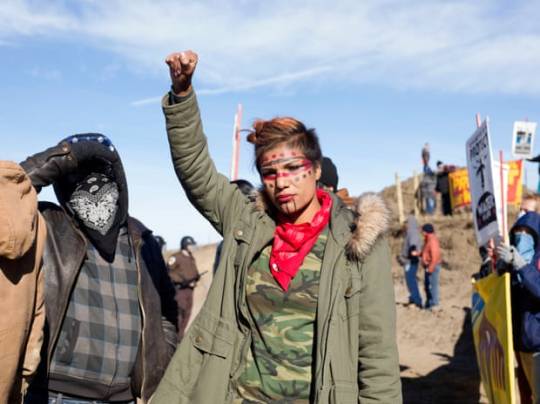
Standing Rock v the Dakota Access Pipeline, 2016. (Photograph: Alessandra Sanguinetti/Magnum Photos)
From April 2016, members of the Standing Rock and other Native American communities began to protest against construction of a pipeline in North Dakota, on the basis that it would affect local water supplies and cross sacred native lands. Barack Obama’s administration halted construction, but Donald Trump would later reverse this decision. The pipeline remains in operation today. FB
#religion#politics#protest#native american#standing rock#dakota access pipeline#north dakota#united states#divinum-pacis
27 notes
·
View notes
Text
#no dapl#dakota access pipeline#please sign and share#petition#petitions#please sign this petition#please share#please sign#climate action#climate science#climate activism#go green#fuck fossil fuels#renewableenergy#renewableresources#renewablerevolution#climate crisis#climate change#climate emergency#climate catastrophe#changement climatique#climate news#climate and environment#climate justice#climate solutions#environmental racism#environmental justice
0 notes
Text
According to documents obtained by Grist and Type Investigations through a Freedom of Information Act request, the FBI’s Minneapolis office opened a counterterrorism assessment in February 2012, focusing on actions in South Dakota, that continued for at least a year and may have led to the opening of additional investigations. These documents reveal that the FBI was monitoring activists involved in the Keystone XL campaign about a year earlier than previously known.
Their contents suggest that, long before the Keystone and Dakota Access pipelines became national flashpoints, the federal government was already developing a sweeping law enforcement strategy to counter any acts of civil disobedience aimed at preventing fossil fuel extraction. And young, Native activists were among its first targets.
“The threat emerging … is evolving into one based on opposition to energy exploration related to any extractions from the earth, rather than merely targeting one project and/or one company,” the FBI noted in its description of the Wanblee blockade.
The 15-page file, which is heavily redacted, also describes Native American groups as a potentially dangerous threat and likens them to “environmental extremists” whose actions, according to the FBI, could lead to violence. The FBI acknowledged that Native American groups were engaging in constitutionally protected activity, including attending public hearings, but emphasized that this sort of civic participation might spawn criminal activity.
To back up its claims, the FBI cited a 2011 State Department hearing on the pipeline in Pierre, South Dakota, attended by a small group of Native activists. The FBI said the individuals were dressed in camouflage and had covered their faces with red bandanas, “train robber style.” According to the report, they were also carrying walking sticks and shaking sage, claiming to be “Wounded Knee Security of/for Mother Earth.”
“The Bureau is uncertain how the NA group(s) will act initially or subsequently if the project is approved,” the agency wrote.
The FBI also singled out the “Native Youth Movement,” which it described as a mix between a “radical militia and a survivalist group.” In doing so, it appeared to conflate a specific activist group originally founded in Canada in the 1990s with the broader array of young Native activists who opposed the pipeline decades later. Young activists would play an important role in the Keystone XL campaign and later on during protests against the Dakota Access pipeline at Standing Rock, but the movement had little in common with militias or survivalists, terms typically used to describe far-right groups or those seeking to disengage from society.
The FBI declined to respond to questions for this story. In an emailed statement, a spokesperson for the Minneapolis field office said the agency does not typically comment on FOIA releases and “lets the information contained in the files speak for itself.”
[...]
Environmental activists and attorneys who reviewed the new documents told Grist and Type Investigations that law enforcement’s approach to the Keystone XL campaign looked like a template for the increasingly militarized response to subsequent environmental and social justice campaigns — from efforts to block the Dakota Access pipeline at Standing Rock to the ongoing protests against the police training center dubbed “Cop City” in Atlanta, Georgia, which would require razing at least 85 acres of urban forest.
The FBI’s working thesis, outlined in the new documents, that “most environmental extremist groups” have historically moved from peaceful protest to violence has served as the basis for subsequent investigations. “It’s astonishing to me how such a broad concept basically paints every activist and protester as a future terrorist,” said Mike German, a former FBI special agent who is now a fellow at the nonprofit Brennan Center for Justice.
255 notes
·
View notes
Text
The pipeline crosses just upstream of the Standing Rock Sioux Tribe's reservation. The tribe draws its water from the Missouri River and has expressed concern over potential pollution from the pipeline.
1 note
·
View note
Text
We’re thrilled to announce our newest title, A Fire at the Center: Solidarity, Whiteness, and Becoming a Water Protector by Karen Van Fossan. It's available at shopinspirit.org and wherever books are sold.
This is a story of becoming and un-becoming. When the living waters that crisscrossed the Standing Rock reservation came under threat, minister of the nearby Unitarian Universalist congregation Karen Van Fossan asked herself what it means, as a descendent of colonialism, to resist her own colonial culture. When another pipeline, Line 3, came to threaten Anishinaabe ways of life, the question became even more resounding.
In A Fire at the Center, Van Fossan takes readers behind the scenes of the Dakota Access Pipeline conflict, to penitentiaries where prisoners of war have carried the movement onward, to the jail cell where she was held for protesting Line 3, to a reimagining of decolonized family constellations, and to moments of collective hope and strength.
With penetrating insight, she blends memoir, history, and cultural critique. Guided by the generous teachings of Oceti Sakowin Camp near Standing Rock, she investigates layers of colonialism—extractive industries, mass incarceration, broken treaties, disappearances of Indigenous people—and the boundaries of imperial whiteness.
For all those striving for liberation and meaningful allyship, Van Fossan’s learnings and practices of genuine, mutual solidarity and her thoughtful critique of whiteness will be transformational.
Karen Van Fossan is an abolitionist, ordained minister, licensed professional counselor, and former defendant in the Line 3 pipeline resistance. As director of Authentic Ministry, she serves as a street chaplain committed to relational spirituality and restorative justice. She has studied at Naropa University, United Theological Seminary of the Twin Cities, and Pacific School of Religion. Matriarch to a rambunctious chosen family, she lives in Fargo, North Dakota, on the traditional lands of Anishinaabe, Lakota/Dakota, and many Indigenous peoples.

#uu#uubooks#skinnerhousebooks#books#meditation#reflection#memoir#standing rock#dakota access pipeline#no dapl
0 notes
Text
The Dakota Access pipeline is illegal and important tribal concerns have been ignored.
On Friday , the U.S. Army Corps of Engineers on Friday released a draft environmental impact statement (EIS) for the Dakota Access oil pipeline that evaluated five alternatives to the proposed pipeline.
The EIS was developed by a member of the American Petroleum Institute, one which which filed a legal brief in support of DAPL, so the Standing Rock Sioux Tribe are aking people to raise concerns and email the Army Corps about the EIS.
The link above contains a pre written email you can personalise or just send as is.
0 notes